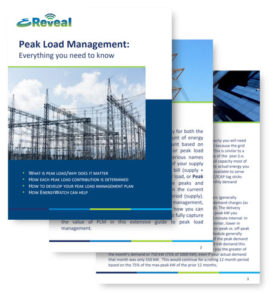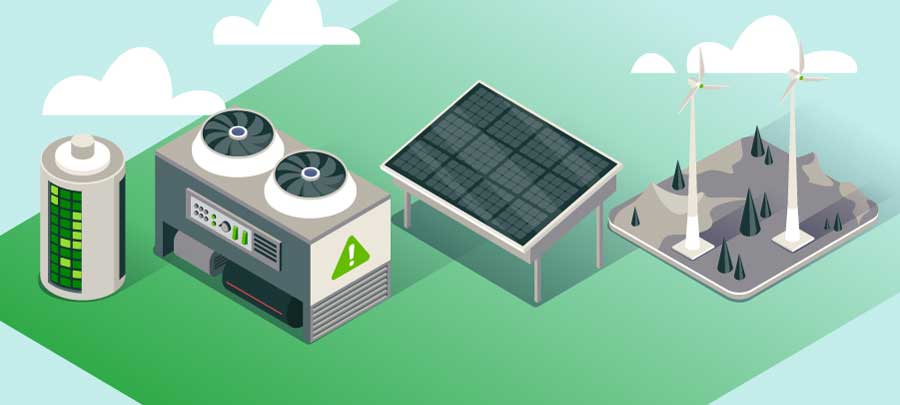Inside an Energy Management Service: Features and 2021 Trends
January 27, 2021
Demand Side Energy Management
March 16, 2021Utility Expenses: 5 Things to Look Out for This Year
2020 was a tumultuous year, with the pandemic causing a dramatic drop in energy demand and throwing companies’ forecasted utility budgets for a loop. It looks like COVID-19 will be sticking with us well into 2021 as the vaccine continues to roll out, and that means it’s very likely to continue to affect your company’s utility expenses.
But COVID isn’t the only thing that’s affecting utility expenses this year. Temperature, weather events, and operational inefficiencies in your building are all culprits as well. Temperature and weather are unique to every year, but the majority of operational inefficiencies can happen at any time, so even with everything that is going on, it’s important to keep your eyes peeled for them.
In this article, we’ll examine how all these factors can drive up (or even unexpectedly lower!) your utility expenses. And of course, we’ll provide you with ways to plan for changes in your utility costs.
Get the Guide to Peak Load Management
1. PHANTOM LOADS IN VACANT BUILDINGS
In previous articles, we’ve discussed peak loads and their effect on energy costs. However, phantom loads (sometimes called plug loads) caused by leaving electronics plugged in when they are not in use, can contribute up to 10% of your overall electric costs. With many offices and some residential buildings operating at drastically reduced capacity during the pandemic, phantom loads could be affecting your building’s operational efficiency more than you suspect.
So, what’s the solution? First, make sure you check in on your building, whether it’s an office or manufacturing plant, and unplug appliances like televisions, desktop computers, printers, and refrigerators. Most devices will never turn off completely when they are still plugged in, so unplugging them ensures they cannot continue to draw power. Second, encourage any people using the building to unplug equipment before they leave for the day. Finally, employing real-time data monitoring is a useful way to pinpoint phantom loads. If the data shows unusually high energy use when your building is vacant and lights and devices are supposedly off, this is a sign that phantom loads are draining your energy.
2. THE COST OF INCREASED VENTILATION
The Chartered Institute of Building Services Engineers (CIBSE) has released guidelines detailing how buildings should be operated to maintain clean air during the pandemic. Some guidelines include running air handling units continually on full air supply (reducing speed only when the building is empty), running toilet extracts continually, and disabling heat recovery devices. All of these actions could result in buildings’ energy consumption increasing even if they are mostly unoccupied. This is particularly applicable if a building is being prepared to reopen, since the air systems may need to be run for a few weeks in advance of reoccupation. Additionally, if the lockdowns continue into the fall and winter months, building plants may run on reduced settings rather than fully off, in order to avoid starting up from cold.
3. 2021 TEMPERATURES
Temperature and weather have a sizeable impact on a building’s energy use and thus the utility expenses it racks up. (The more extreme the temperatures in either direction, the more electricity is required to heat and cool buildings and factories). According to long-range weather forecasts, 2021 Winter temperatures in the Atlantic corridor will be above normal, as will Spring and Summer temperatures. Rounding out the year, September and October will be cooler than normal. Keep these estimates in mind as you examine your utility data.
4. HURRICANE SEASON: DISRUPTIONS IN FUEL SUPPLY
The Atlantic hurricane season is set to begin in June and is expected to be another active one. Hurricanes pose a threat to our energy infrastructure, causing fluctuations in oil, natural gas and electricity prices, which in turn show up on your utility bills. The Gulf Coast accounts for 45% of U.S. oil refining capacity, 17% of oil production, and 5% of natural gas production and processing. A hurricane hitting the Gulf can shut down these capabilities for days or weeks at a time. In the past few years, we saw the impact of Hurricane Harvey (2017) on oil and natural gas prices. Hurricane Harvey shut down roughly a quarter of US oil refining activity, a loss of 2.3 million barrels of daily processing capacity. Gasoline prices increased by over 7% within the span of a few weeks.
Luckily, hurricanes are not as detrimental to natural gas prices because of the country’s decreased reliance on offshore production due to the onshore shale gas revolution. Natural gas production has increased by more than 40% between 2007 and 2017 due to fracking. Onshore fracking and reserves are located in states that experience little to no hurricane activity, eliminating any disruptions in production. This means that hurricanes do not always have a huge impact on utility expenses. However, they are still a factor to keep in mind, especially if this year’s hurricane season should turn out to be severe.
5. OPERATIONAL INEFFICIENCIES
Simply put, operational efficiency is the measurement of how much energy your building actually requires in proportion to how much money you plan to spend on energy for the building. For example, if your energy budget for the year is $200,000 but your building is consistently losing energy, then you will spend more money, use more energy, and have an inefficient building. However, if your building uses the same amount or less energy than you budgeted for, it’s likely that you are not losing a significant amount of energy to air leaks, programming issues, or phantom loads. Operational efficiency is especially important this year; not only do investors, consumers, and clients value energy efficiency in the companies they have relationships with, but the Biden Administration has ambitious goals when it comes to reducing U.S. greenhouse gas emissions. In Biden’s first 100 days in office, expect new climate measures to be passed which will make your building(s) level of efficiency critical to compliance. Possible areas of inefficiency in your building may include:
- Lighting systems: If the systems in your building are old and inefficient, you may be losing a great deal of both energy and money. Some estimates state that lighting accounts for more than 40% of electricity use in offices, stores, and other commercial buildings. LED fixtures and bulbs can increase your building’s lighting efficiency, and both are compatible with dimmers. It is common knowledge that turning off lights in unoccupied rooms is key to saving energy. However, installing dimmers or internet connected controls on your building’s light switches can add another layer of electric savings. Dimmers and controls reduce the wattage and output of the bulb, while simultaneously increasing its life span. Additionally, because lighting is one of the largest uses of energy in buildings, real-time data monitoring can be used to detect inefficiencies or verify the efficiency of new lighting.
- Heating, ventilation and air conditioning (HVAC) systems: The HVAC system is even more important during the pandemic, when proper ventilation in a building is needed to keep everyone safe. That said, the HVAC system is usually one of the biggest areas of energy consumption within a facility. An HVAC system is comprised of ductwork and registers, fans and blowers, and various electrical connections. All of these can be areas where energy is lost. You can use both manual and thermal techniques to inspect the efficiency of your building’s HVAC system. With infrared thermal technology, you can see the air loss or gain in the duct work. In the fans and blowers, inefficiencies will show up as overheated bearings or other components. Additionally, real-time data monitoring can be used to determine the status of your HVAC system. Since the HVAC should not be shut off entirely even if your building is vacant during COVID-19, continually high energy use could be a sign that the system is not running efficiently.
- Electrical motors: Electrical motors use up a large amount of the energy budgeted for a facility. Overheating and malfunctioning motors and generators can be indicative of mechanical or electrical inefficiencies that can lead to more energy use (and in worse case scenarios, system failure). The best ways to reduce your motors’ energy use are to keep motors well maintained, size them appropriately and operate at them constant speeds. Generators are essentially reverse motors, so diagnostics are similar.
- Steam systems: Today, steam systems are more common in industrial settings (like factories) than commercial settings. However, some commercial buildings still use steam for central heating. In New York City, for example, steam is one of the major sources of power. Like any system, steam heating is prone to leaks, so make sure you have them inspected regularly.
NEXT STEPS TO TAKE
It is still unclear how long the effects of the COVID-19 pandemic will be felt. In the meantime, if you haven’t already, begin taking steps to manage your portfolio’s utility bills. To help guide you through the process, Efficient Power Tech has created a number of concise e-books and tools. For more information on peak load management and how it can impact your utility bills, download the Guide to Peak Load Management. For help revising your 2021 utility budget or planning your budget for 2022, refer to our Energy Budgeting Template, where you can enter your unique rates, taxes, and adjustments and see them translated into a comprehensive utility budget equipped with usage, demand, delivery, and supply projection graphs.
Additionally, energy management software (like Efficient Power Tech’s eReveal) is vital to making your building more efficient. Not only can eReveal provide you with real-time data monitoring (as mentioned above), it can assist you with preparing energy budgets, measure your water, energy, and steam consumption, help you measure and verify the effectiveness of your efficiency projects, and benchmark your efforts against national efficiency standards like WELL Building and report to ENERGY STAR. To learn more about Efficient Power Tech’s capabilities, call us at 713-783-2367.





